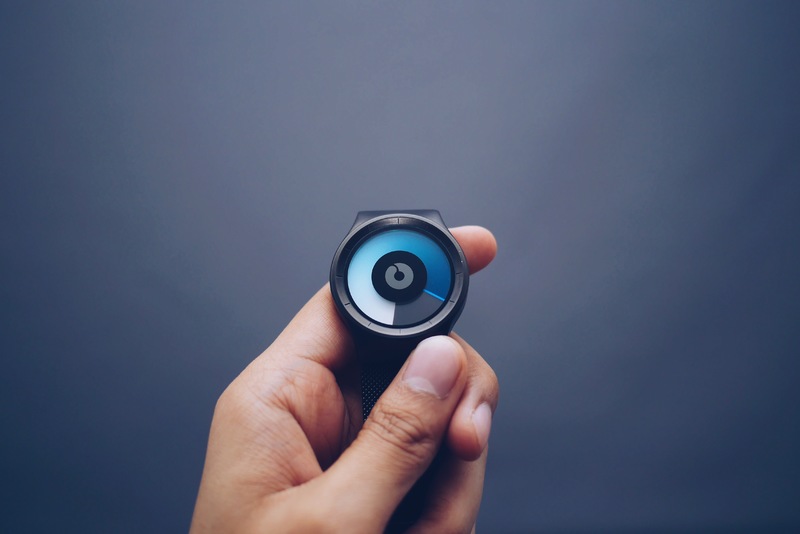Saligrama Agnihothri, Binghamton University, State University of New York
Health-tracking devices and apps are becoming part of everyday life. More than 300,000 mobile phone applications claim to help with managing diverse personal health issues, from monitoring blood glucose levels to conceiving a child.
But so far the potential for health-tracking apps to improve health care has barely been tapped. While they allow a user to collect and record personal health data, and sometimes even share it with friends and family, these apps typically don’t connect that information to a patient’s digital medical chart or make it easier for health care providers to monitor or share feedback with their patients.
As a professor and a researcher in the field of operations management, my current research focuses on improving the efficiency and effectiveness of health care delivery. My colleagues and I recently published a multiyear study showing that integrating a mobile health app with ongoing medical care can significantly improve the health of patients with hypertension – a widespread, serious, and potentially deadly chronic medical condition.
But it’s not easy to use health apps this way as a regular part of medical care in the U.S.
Case study: Hypertension
Hypertension, better known as high blood pressure, is one of America’s leading chronic health problems. According the U.S. Centers for Disease Control and Prevention, hypertension was a primary or contributing cause to nearly half a million deaths in 2018 and affected nearly half of U.S. adults – nearly 110 million people. Left uncontrolled, high blood pressure can also permanently damage the heart and other parts of the body.
Simple changes in diet, exercise, smoking and drinking can help prevent or postpone the onset of hypertension. Once a person has high blood pressure, the focus of medical care is treatment and management. But patients typically see their doctors only three to four times a year, making it difficult for physicians to track, assess and address the root causes of their hypertension. These visits also tend to be brief, because the fee-for-service insurance payment model motivates doctors to see more patients in a given day.
Prior studies on the effectiveness of mobile health apps for self-management of hypertension were done in controlled settings in which all the participants agreed to use the app, rather than in clinical settings where patients had a choice of whether to engage with care providers using the app. We wanted to see how a hypertension patient’s use of an app played out in a real-world setting. So one of my study co-authors, a practicing endocrinologist, developed a proprietary web-based smartphone app to help monitor and treat hypertension between office visits.
Patients who received this app free of charge measured and entered their blood pressure and pulse readings. The physician reviewed these readings once a day and, if needed, recommended interventions such as new medications or changing doses of existing medications, or advised on diet and exercise. My co-author and his medical assistants weren’t paid to monitor these patients.
Patients and staff could also talk directly with one another through the app. This enabled regular communication and joint decision-making between providers and patients on how to best treat their hypertension, which in turn encouraged patients not to abandon the app after only a few uses.
In tracking the condition of 1,600 hypertension patients over the course of four years, we found that a typical app user reduced her systolic blood pressure – the upper value in a blood pressure reading, indicating the pressure while the heart muscle contracts – by 2 “millimeters of mercury,” or mmHG, compared with someone not using the app. For patients with systolic blood pressure greater than 150 mmHG, the reduction was more than 6 mmHG. These were significant decreases. A reduction of 10 mmHG in systolic blood pressure lowers overall mortality risk by 13%.
Our study bears out the findings of other researchers who have found that using mobile health apps is beneficial for managing chronic conditions.

Barriers to connection
These finding were promising, but there’s a catch: Many patients can’t afford to buy a mobile device and pay for its service.
Further, medical practices need to make a profit to survive, and there is currently no clear way for a provider to charge for time spent providing medical care via an app. However, the massive switch during the COVID-19 pandemic from in-person care to telehealth has driven many insurers to figure out how to bill for services delivered remotely. These solutions might eventually apply to medical health apps as well.
Developers also have few financial incentives to create apps that integrate with professional health care. Apps commonly earn revenues by converting users into paying customers or ongoing subscribers, or by selling advertising space within the app. The most profitable apps tend to be mobile phone games, which use psychological techniques to increase sales.
But these would be inappropriate in the medical setting. Selling to a patient – or selling the patient’s attention to advertisers – raises questions like: Is my data safe? Is this a medically necessary sale? Does my doctor earn money from this? These concerns could reduce the trust between physician and patient that is essential to treating chronic health conditions.
[Get the best of The Conversation, every weekend. Sign up for our weekly newsletter.]
And the tech has to work. Patients care about how easy it is to use an app, and whether it has the tools that they are looking for. Providers are unhappy when their patients have bad experiences with technology. Further, there are no established standards ensuring that mobile health apps are collecting or delivering accurate information, as there are with most professional medical monitoring equipment.
But as the recognition grows that properly designed health care apps can play a big role in enabling more effective medical care, we could see a major stakeholder step in and provide a monetary incentive for app development and use: the insurance carriers who benefit from lower costs of care.
Ultimately, the key part of treating hypertension and other chronic health problems is the interplay between patient and doctor. Our research shows that a well-designed health app that talks not just to the user but also to the user’s care providers increases the likelihood of that engagement and leads to better treatment and better health.
Saligrama Agnihothri, Professor of Supply Chain and Business Analytics, Binghamton University, State University of New York
This article is republished from The Conversation under a Creative Commons license. Read the original article.











